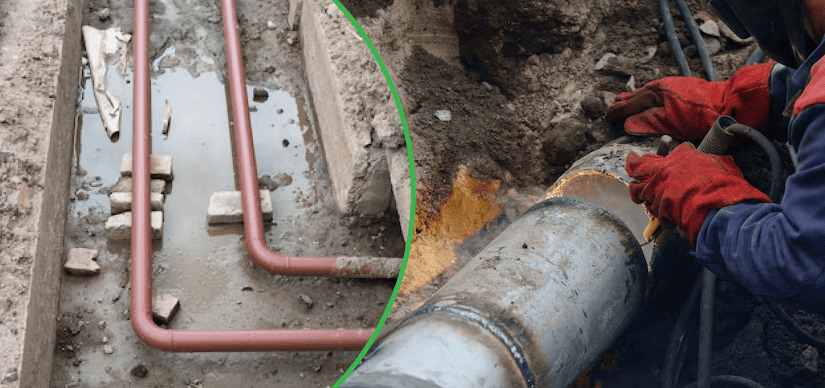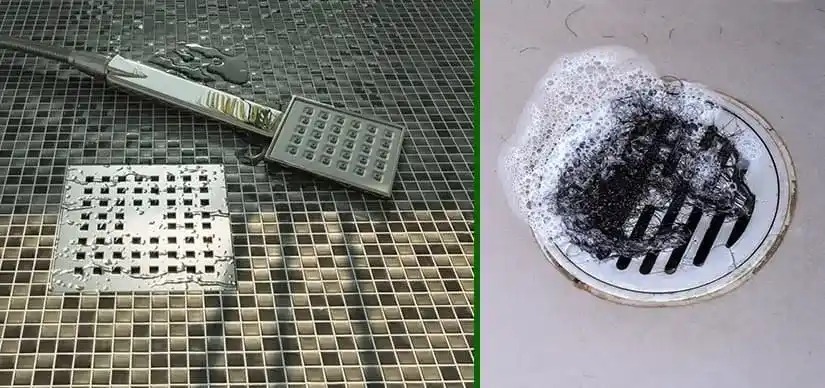Detecting Trouble Below: Key Signs of Sewer Line Problems and What to Do
Views : 859

Common Sewer Line Problems
1. Tree Root Intrusion:
- Cause: Tree roots are naturally drawn to the nutrients and moisture in sewer lines. Over time, they can infiltrate the pipes, causing blockages and damage.
- Prevention: Regular inspections and root barrier installations can help prevent tree roots from entering sewer lines.
2. Pipe Corrosion:
- Cause: Older pipes, especially those made of materials like cast iron or clay, may corrode over time. Corrosion can lead to weakened pipes, cracks, and eventual failure.
- Prevention: Regular inspections and timely replacement of corroded pipes can prevent more severe issues.
3. Pipe Bellies or Sags:
- Cause: Settlement of the ground or shifting soil can lead to sections of the sewer line forming bellies or sags, causing water and waste to pool.
- Prevention: Proper installation and regular inspections can help identify and address Sewer Line Blockage Signs.
4. Grease Buildup:
- Cause: Improper disposal of grease and fats down drains can lead to the accumulation of sticky residue inside sewer pipes, causing blockages.
- Prevention: Avoid pouring grease down drains and use strainers to prevent food particles from entering the sewer system.
5. Foreign Objects:
- Cause: Flushing non-biodegradable items, such as wipes, sanitary products, or excessive amounts of toilet paper, can cause blockages in the sewer line.
- Prevention: Educate household members about proper disposal practices and use plumbing-friendly products.
6. Ground Freezing and Thawing:
- Cause: In colder climates, the ground can freeze and thaw, causing shifts that may lead to the misalignment or cracking of sewer pipes.
- Prevention: Proper insulation of pipes and ensuring they are installed below the frost line can help prevent damage.
7. Poor Installation or Materials:
- Cause: Identifying symptoms of sewer issues becomes difficult with incorrect installation or the use of substandard materials during the initial construction of the sewer system, which can contribute to premature failures.
- Prevention: Ensure sewer lines are installed by qualified professionals using quality materials to avoid sewer line problems and keep it functional for a longer time.
Top Six Signs of Sewer Line Problems and Prevention Methods
1. Foul Odors:
One of the most noticeable signs of sewer line issues is the presence of foul odors. If you can manage to identify sewer problems or unpleasant smells in your yard or home, it could be a result of sewage gases escaping from a damaged or blocked sewer line. Ignoring these odors may lead to more severe problems, so prompt investigation is crucial.
- Identification: Professionals will use specialized equipment, such as smoke tests or sewer cameras, to locate the source of the odor.
- Repair: Once identified, repairs may involve fixing leaks, replacing damaged pipes, or addressing issues with the sewer venting system
- Prevention: Plumbers may recommend preventive measures like regular sewer line inspections and the installation of sewer line traps to prevent unusual sewer odors.
2. Slow Draining Fixtures:
A sudden decrease in drainage speed is an early indicator of Sewage problems. If multiple fixtures, such as sinks, showers, or toilets, are draining slowly or gurgling, it may signify a blockage or damage in the sewer line. Pay attention to these warning signs to prevent further complications.
- Inspection: Plumbers will conduct a thorough inspection using sewer cameras to identify the cause of the slow drain.
- Clearing Blockages: Depending on the cause, professionals may use techniques like hydro-jetting to clear blockages caused by grease, debris, or tree roots.
- Repairs: If the slow drainage is due to damaged pipes, plumbers will repair or replace the affected sections.
3. Backups and Blockages:
Recurrent backups in your plumbing system, especially in multiple fixtures, indicate a potential sewer line issue. Blockages can occur due to various reasons, such as tree root intrusion, grease buildup, or the accumulation of non-flushable items. Regular maintenance can help prevent these blockages, but if they persist, it’s essential to address the underlying sewer line problem.
- Rooter Services: Professionals may use a rooter machine to clear blockages caused by tree roots invading the sewer line.
- Hydro-Jetting: High-pressure water jetting can effectively clear stubborn blockages and debris from the sewer line.
- Pipe Repair or Replacement: In cases of severe damage, plumbers may recommend repairing or replacing sections of the sewer line to prevent future blockages.
4. Lush Patches of Grass:
An unexpected area of unusually vibrant and lush grass in your yard might be a hidden sign of sewer line problems. Leaks from a damaged sewer line can act as a fertilizer, promoting the growth of grass and plants. If you notice a patch of greenery that stands out from the rest, it’s worth investigating the possibility of a sewer line leak.
- Camera Inspection: Plumbers will use sewer cameras to inspect the sewer line for leaks.
- Leak Repair: Once identified, leaks can be repaired through methods such as pipe lining or pipe replacement to prevent further damage to the yard.
5. Sewage in the Basement:
The presence of sewages in your basement is a severe warning sign of sewer Line of a compromised sewer line. This could be the result of a blockage, break, or even a collapsed pipe. Any visible signs of sewage in your home demand immediate attention to prevent further damage and ensure the safety of your living environment.
- Emergency Cleanup: Professionals will first address the immediate issue by safely removing sewage from the basement.
- Identifying the Cause: Using sewer cameras and other diagnostic tools, plumbers will identify the cause of the sewage backup.
- Repairs: Depending on the issue, repairs may involve clearing blockages, repairing damaged pipes, or replacing sections of the sewer line.
6. Unexplained Puddles in the Yard:
If you notice unexplained puddles in your yard, especially when it hasn’t rained recently, it could be a sign of a leaking sewer line. Leaks can saturate the soil, creating damp areas in your yard. Investigate any unexplained wet spots promptly to identify and address potential sewer line issues.
- Sewer Camera Inspection: Plumbers will use sewer cameras to locate and assess any leaks or damage to the sewer line.
- Leak Repair: Once the location is identified, plumbers will repair or replace the damaged section to eliminate the leak.




.jpg)